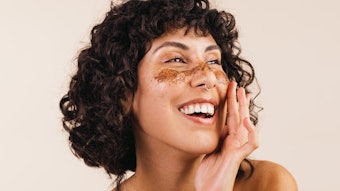
aVitamin D is being proclaimed by many physicians and skin care experts as an impactful way to build your skin care business while making a profound difference in your clients’ health. It is a hormone manufactured in the body when skin is exposed to sunlight. During the past decade, vitamin D has gone from being recognized primarily for its role in bone health to being investigated for its possible role in a wide range of body functions and in the prevention of diseases ranging from cancer and diabetes to multiple sclerosis and depression.
Vitamin D deficiency
Michael F. Holick, PhD, MD, author of The Vitamin D Solution (Plume, 2011) claims, “If I had to give you a single secret ingredient that could apply to the prevention—and treatment, in many cases—of heart disease, common cancers, stroke, infectious diseases from influenza to tuberculosis, type 1 and 2 diabetes, dementia, depression, insomnia, muscle weakness, joint pain, fibromyalgia, osteoarthritis, rheumatoid arthritis, osteoporosis, psoriasis, multiple sclerosis and hypertension, it would be this: vitamin D.”
An understanding of the power of vitamin D is important to you as a skin care professional because it impacts a majority of the clients you work with every day.
One billion people worldwide—a figure that grows during the winter—are estimated to be vitamin D-deficient1, including:
- Three out of every four Americans;2
- 76% percent of pregnant women, causing many of their unborn children to be;3
- 42% percent of African-American and Latina women of childbearing age;3
- Almost half (48%) of girls ages 9–11;3
- People who live in Northern latitudes;4
- People who are rarely outdoors;4 and
- Those who are aging, because the skin’s ability to manufacture vitamin D from sunlight is reduced over time.4
How many of your clients fit into one or more of the above categories?
Only made in the skin
Vitamin D is only manufactured in one place—the skin. As people age, the skin’s ability to produce vitamin D declines. Vitamin D deficiency has been linked to chronic skin conditions, such as rosacea, eczema and psoriasis.5 Heavy wrinkling on the face and body results as people lose bone density due to lack of vitamin D.5
Just as vitamin C is now embraced as playing a critical role in immune defense both topically and internally, vitamin D sufficiency is proving to be even more critical to helping the body stave off disease and prevent some forms of depression, seasonal affective disorder, premenstrual syndrome and sleeping disorders.6
Contrary to what many believe, very few foods naturally contain vitamin D. Fortified foods provide most of the vitamin D in American diets.
Fatty fish such as salmon, tuna and mackerel are among the best sources, and beef liver, cheese and egg yolks provide small amounts.
Mushrooms provide vitamin D. In some mushrooms that are available in stores, the vitamin D content is being boosted by exposing these mushrooms to UV light, making for a viable option for vegans and raw-diet followers.
Almost all of the United States’ milk supply is fortified with 400 IU of vitamin D per quart. However, foods made from milk, such as cheese and ice cream, are usually not fortified.
Vitamin D is added to many breakfast cereals and to some brands of orange juice, yogurt, margarine and soy beverages—check the labels.
Even if you get enough vitamin D internally, less than 1% of what is ingested ever makes its way to the skin. Thus, a yin-yang challenge. Getting enough vitamin D into your body is like having a gas tank that can never be filled. If you add a few drops of gas to an empty gas tank, will your car start? No. You have to put in enough gas to get the engine circulating.
This is the same for your clients. The body has to have vitamin D to make vitamin D. There is not a reserve of vitamin D; it constantly has to be replenished. Because it’s made in the skin, you have to refill vitamin D at a topical and internal level every day. The amount of vitamin D absorbed topically is different for each client. Almost all serums have a similar penetration level, which is into the upper layers of the skin. Encourage clients to focus on vitamins B, C, D and E for optimal skin health. Vitamin K is also great for the eye area.
Vitamin D and the sun
The body makes vitamin D when skin is directly exposed to the sun, and most people meet at least some of their vitamin D needs this way. Skin exposed to sunshine indoors through a window will not produce vitamin D. Cloudy days, shade and having dark-colored skin also cut down on the amount of vitamin D the skin makes.
However, despite the importance of the sun to vitamin D synthesis, it is prudent that clients limit exposure of skin to sunlight in order to lower the risk for skin cancer. Always coach clients to wear protective clothing and apply sunscreen with an SPF of at least 15.
How much?
Just like everything else in life, you have to have balance when it comes to vitamin D. It’s a hormone and regulates everything else in the body. Because hormonal imbalances cause skin conditions, if your clients are able to balance their vitamin D levels, many skin conditions will improve, such as rosacea and heavy wrinkling, and this balance needs to take place through diet and topical products.
A rule of thumb: the U.S. Department of Agriculture daily requirement of vitamin D is 600 IU per day. Many physicians are recommending a higher level of about 1,200 IU per day. The daily requirements for vitamin D were recently raised from 400 to 600 IU as a standard. However, various medical boards recommend up to 1,200 IU at a minimum. As people age, they produce less vitamin D, so it is important to educate clients each and every year on the importance of vitamin D just as you do on skin care, healthy eating, exercise and sun protection. Engage your clients in being vitamin Dsufficient, and make it simple for them to do so by making the information and take-home products needed to do so available in your facility.
Clients who are interested in incorporating vitamin Dinto their skin care routine should ask their physician for a 25-hydroxyvitamin D test, also called a 25(OH) Dtest. According to Holick: “25(OH) is the circulating form of vitamin D that the liver generates and then becomes activated by the kidneys. While it’s intuitive to think you’d want to test for the body’s ‘active form’ rather than just a precursor, testing for the activated vitamin D (1,25-vitamin D) does not give an accurate portrayal of your vitamin D status.”
Holick adds that many physicians order the wrong test, and when the results come back showing a normal level of activated vitamin D, they think everything is fine. However, the client could be suffering from a serious deficiency, even though the activated levels appear normal or even elevated.
Safe sunshine
The best tactic skin care professionals can use to help clients improve their balance is to encourage clients to take an inside-out approach to vitamin D. In addition to eating fish, mushrooms and vitamin D-enriched foods, encourage clients to apply a daily dose of vitamin D underneath their sunscreen. After all, you are educating them to use sun protection daily, so it’s simple to add an application of vitamin D right before the sunscreen goes on for a daily dose of safe sunshine.
REFERENCES
- www.ncbi.nlm.nih.gov/pmc/articles/PMC3068797
- www.scientificamerican.com/article.cfm?id=vitamin-d-deficiency-united-states
- faq.testcountry.com/HOW_COMMON_IS_VITAMIN_D_DEFICIENCY_IN_US__ANY_STATISTICS_OR_SURVEYS_ABOUT_POPULARITY_OF_VITAMIN_D_DE/1677.htm
- JE Swartzburg, The Benefits of Vitamin D: Bone Health and Beyond, The Wellness Reports, University of California, Berkley
- www.webmd.com/food-recipes/guide/are-you-getting-enough-vitamin-d
- MF Holick, The Vitamin D Solution, Plume, New York (2011)
(All websites accessed Jan 9, 2013.)
With two decades in the beauty and wellness industries, Celeste Hilling is the founder, CEO and product formulator for Skin Authority, and is a respected speaker and media resource on skin care, healthy lifestyles, self-esteem and business.










